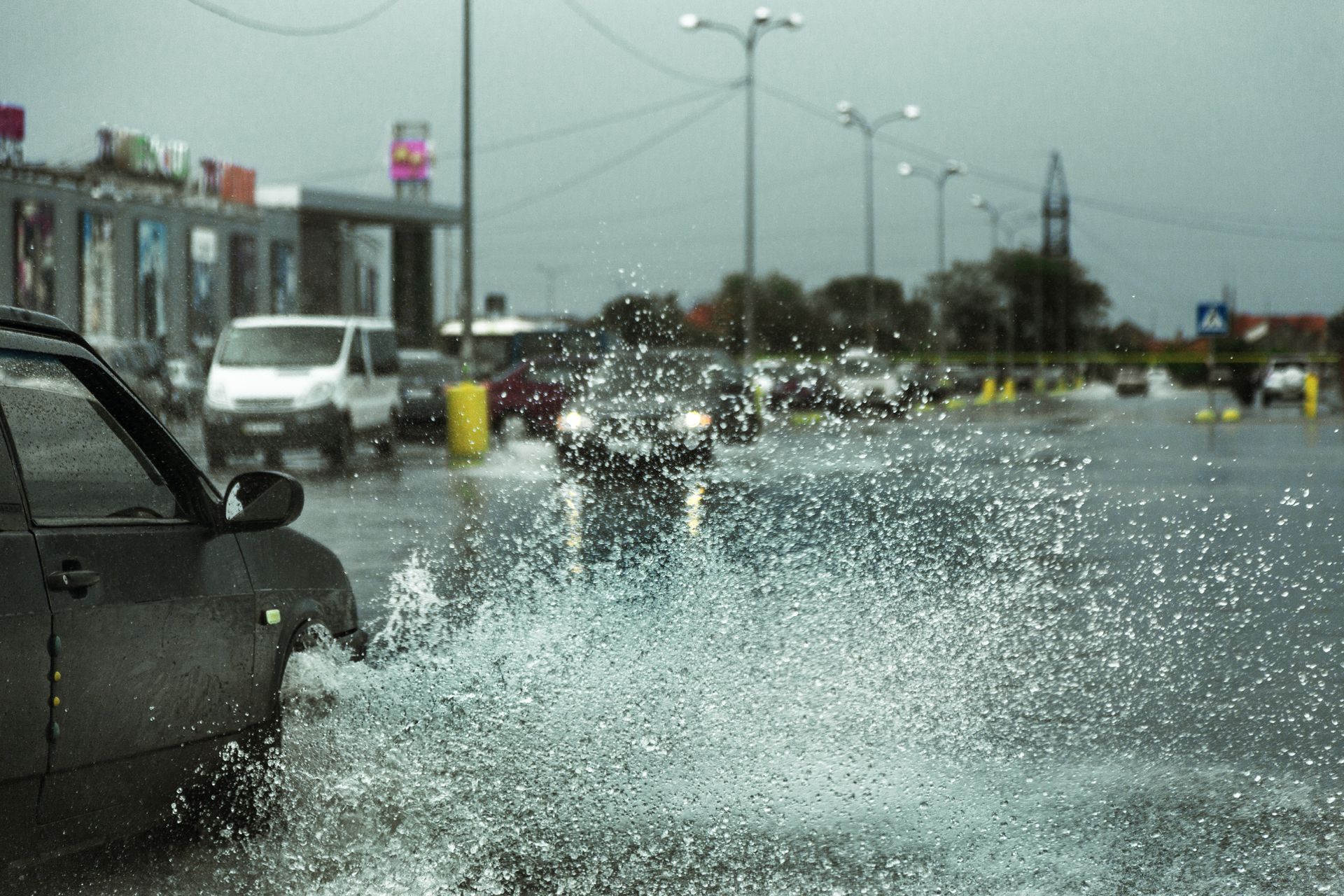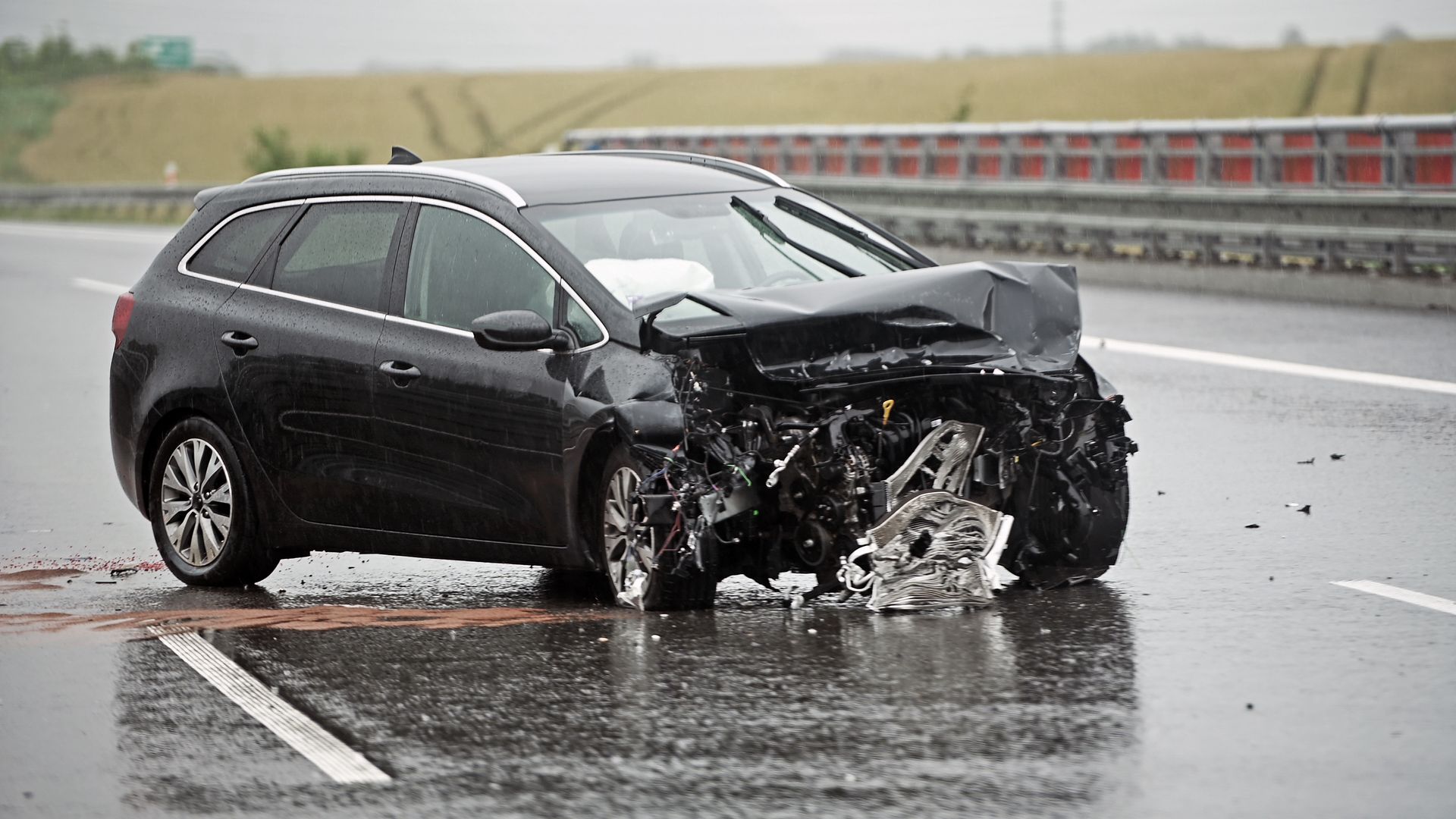Drive Safely in the Rain: 6 Essential Tips & The Importance of Auto Insurance

Introduction
The allure of rain often paints pictures of cozy indoor moments, accompanied by the rhythmic patter of droplets on the windowpane. Yet, for the driver behind the wheel, these very droplets can transform the road into a challenging terrain. Rain not only dampens the road but also the predictable behavior of it. From reduced visibility to slippery stretches, the beauty of the rain can quickly turn into a hazard for the unprepared motorist.
Importance of Being Prepared and Driving Safely During Such Conditions:
- Adverse weather accounts for a significant number of road accidents annually.
- Preparation minimizes the risk of mishaps and keeps both drivers and pedestrians safe.
- Safeguarding your vehicle through maintenance can prevent unexpected breakdowns in the rain.
- Safe driving habits in the rain protect against long-term costs, from vehicle damages to insurance rate hikes.
- Being cautious and attentive ensures you reach your destination safely, regardless of the weather.
Why Driving in the Rain is Different & Risky
Reduced Visibility
When rain pours, it's not just the road that gets drenched but also the driver's line of sight. Water droplets on windshields, mist from other vehicles, and reduced daylight can greatly diminish one's ability to see the road ahead clearly. The consequence? A higher likelihood of missing crucial details, such as pedestrian movements, traffic signals, or even an approaching vehicle.
Reduced Tire Grip Leading to Hydroplaning
Rainwater, when combined with oil residues on the road, creates a slippery film. Tires, designed to grip onto the road, can instead glide over this film, an effect known as hydroplaning. When this happens, the driver loses significant control over steering and braking, making the vehicle act like it's sliding on ice.

Increased Braking Distances
Wet roads demand more distance for vehicles to come to a complete stop. The combination of reduced tire grip and the slick nature of rain-drenched roads means brakes have to work overtime. Drivers accustomed to dry-road braking distances may find themselves unable to stop in time, leading to potential collisions.
Unpredictability of Other Drivers
Each driver reacts differently to rainy conditions. While some may become overly cautious, slowing down significantly, others might underestimate the dangers and drive recklessly. This varying behavior adds an element of unpredictability to the road, making it essential for drivers to be even more vigilant about not just their own driving, but also that of others around them.
The 6 Essential Safety Tips for Driving in the Rain
1. Proper Vehicle Maintenance
- Ensuring Windshield Wipers are in Good Condition: Windshield wipers act as your frontline defense against rain, swiping away water to provide clear vision. Old or damaged wipers can leave streaks, compromising visibility. Regularly replacing them ensures a clear, unobstructed view of the road, especially during heavy downpours.
- Regularly Checking and Replacing Tires to Maintain Good Tread Depth: Tire treads play a vital role in maintaining grip on wet roads. As they wear down, the risk of hydroplaning increases. Regularly inspecting the tread depth and replacing tires when needed can significantly reduce the risk of losing traction on wet surfaces.
- Ensuring Headlights, Tail Lights, and Brake Lights are Fully Functional: In reduced visibility conditions, functioning lights are crucial not just to see but also to be seen by other road users. Headlights illuminate the path ahead, while tail and brake lights signal your presence and intentions to vehicles behind. Regularly checking and replacing any faulty lights enhances safety for everyone on the road.
2. Reduce Speed & Increase Following Distance
- Importance of Slowing Down to Account for Reduced Visibility and Increased Stopping Distances: Driving at high speeds in the rain not only diminishes a driver's ability to spot hazards in time but also extends the distance required to bring the vehicle to a halt. Slowing down is paramount; it compensates for the compromised visibility and caters to the longer stopping distances that wet roads demand, thereby reducing the chances of accidents.
- Doubling or Tripling the Standard Safe Following Distance: Under dry conditions, the typical "three-second rule" might suffice, but wet roads introduce added complexities. By doubling or even tripling this distance, drivers provide themselves with a safety buffer. This extended gap allows more time to react to sudden stops or unexpected maneuvers from the vehicle ahead, ensuring safer navigation through rainy conditions.
3. Avoid Hydroplaning
- Explanation of What Hydroplaning Is: Hydroplaning, or aquaplaning, occurs when a layer of water builds between the tires of the vehicle and the road surface. This leads to a loss of traction, rendering the vehicle unresponsive to control inputs like steering, braking, or accelerating. In simpler terms, the vehicle essentially "floats" or "skates" on the water, making it highly unpredictable and difficult to control.
Tips to Prevent Hydroplaning and Actions to Take if It Occurs: To reduce the risk of hydroplaning:
- Avoid Puddles and Standing Water: Driving through deep water increases the likelihood of hydroplaning. By steering clear of visible water patches, you diminish this risk.
- Keep Tires Properly Inflated: Adequate tire pressure ensures optimal tire performance and minimizes the water-trapping grooves that can induce hydroplaning.
- Drive in the Tire Tracks of Vehicles Ahead: The vehicles in front of you displace water as they move, so following in their tracks can mean driving on a slightly drier patch of the road.
If you find your car starting to hydroplane:
- Remain Calm: Panicking can lead to overcorrection, making the situation worse.
- Ease Off the Accelerator: Gently let up on the gas without slamming the brakes.
- Steer in the Direction You Want to Go: If the rear of your car starts sliding left, gently steer left. If it slides right, steer right. Always remember, where you look is where the car will go.
- Avoid Hard Braking or Turning: Sudden movements can further reduce tire traction, exacerbating the hydroplaning effect.
4. Turn on Your Headlights
The act of turning on your headlights during rainfall, while simple, plays a critical role in ensuring safety on the road. Firstly, headlights help enhance the driver's own visibility. As rain can shroud the road in a veil of mist and murkiness, headlights pierce through this obscurity, making obstacles, road signs, and other vehicles more discernible. Secondly, and equally vital, is the role headlights play in signaling your presence to other drivers. In conditions of reduced visibility, the glow of headlights can often be spotted before the vehicle itself, alerting fellow motorists of your proximity. This dual function of the headlights—illuminating the road ahead and announcing your presence—becomes a linchpin of safe driving during rainy conditions.
5. Avoid Using Cruise Control
While cruise control is a convenient feature for long drives on clear, dry roads, it's not advisable to use it when driving in the rain. The reason? Cruise control aims to maintain a constant vehicle speed, which can actually work against you when road conditions are wet. If your car starts to hydroplane while cruise control is activated, the system may detect the reduced rolling resistance as a drop in speed. In response, it might try to accelerate, exacerbating the hydroplaning effect by increasing the vehicle's speed. Deactivating cruise control allows the driver to have more immediate and nuanced control over the vehicle, enabling quicker reactions to changing road conditions and minimizing the risk of hydroplaning.
6. Pull Over Safely If Necessary
Rain can sometimes escalate from a light drizzle to a torrential downpour in a matter of minutes. When faced with such severe conditions, where the roar of rain drowns out all other sounds and the path ahead becomes a blurry cascade of water, the safest decision is often to take a pause. If you find that the rain is hampering your visibility to the extent that discerning the road ahead becomes a challenge, or if the water accumulation makes driving treacherous, it's wise to pull over. However, always ensure that when you do so, you're in a safe spot, away from the flow of traffic, preferably in a designated pull-over area or parking lot. Turn on your hazard lights to alert other drivers of your presence and wait until conditions improve before resuming your journey. Safety always takes precedence, and sometimes, patience becomes the best tool in a driver's arsenal.
The Aftermath of Rainy-Weather Accidents
Rain-induced road accidents can have a ripple effect, bringing along a host of unwelcome physical and financial ramifications. The immediate aftermath might involve vehicle damages, injuries, or, in unfortunate circumstances, fatalities. These physical repercussions are often paired with substantial financial burdens—from repair bills and medical expenses to potential increases in insurance premiums. The emotional toll, too, can be significant, with drivers grappling with trauma or guilt. This underscores the vital importance of being proactive. By taking precautionary measures, being well-informed, and driving responsibly in the rain, one can potentially steer clear of these dire outcomes. It's always more prudent to prevent a situation than to deal with its aftermath; in the realm of driving, this truism holds particularly strong significance.

Conclusion
Rain, with its rhythmic beauty, can quickly transform the road into a challenging and unpredictable terrain for drivers. As motorists, our primary responsibility is to ensure not only our safety but also that of fellow road users. By heeding the precautions and guidelines for rainy weather driving, we can significantly reduce the risks associated with wet road conditions, ensuring that our journeys remain as safe as possible.
However, even with the utmost caution, the unexpected can happen on the road. No matter how safely we drive, accidents can happen. Ensure you’re covered against the unexpected with Online Insurance Hub’s comprehensive auto insurance. Being prepared is not just about proactive driving; it's also about securing the safety net that insurance provides.




